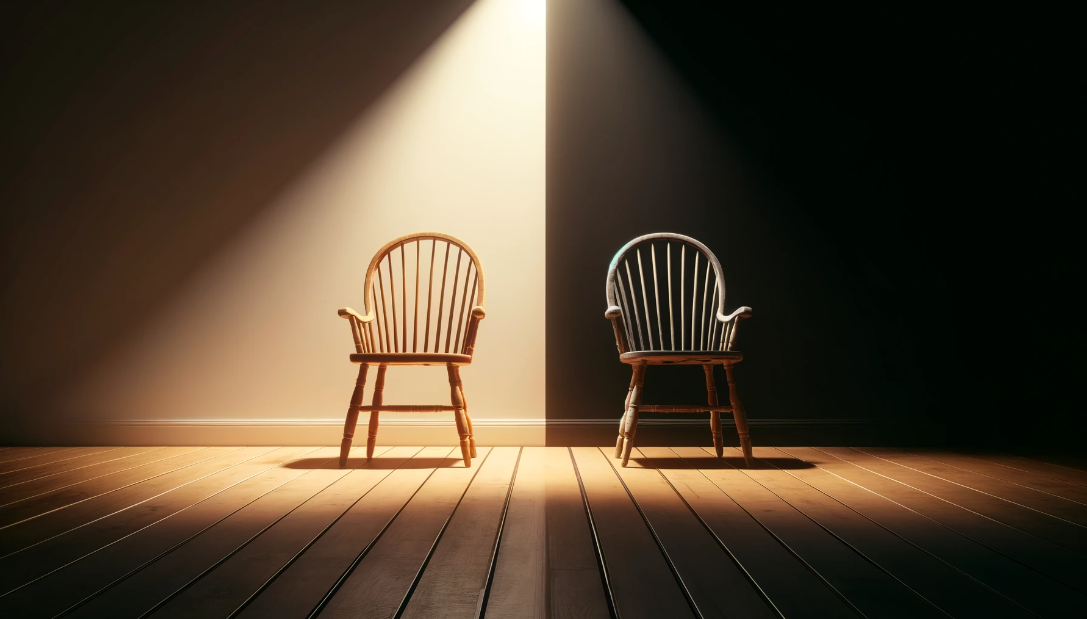If you paid attention to just one story about furniture knockoffs last week, it was likely the one that featured Kim Kardashian. To recap: The estate of artist Donald Judd let loose a bombshell lawsuit accusing Kardashian and her designers of knocking off tables and chairs by Judd for the celebrity’s office. What’s worse, Kardashian seemed to claim the pieces were real in a video tour of the space. “If you guys are furniture people,” she says, “these Donald Judd tables are amazing.”
Cue coverage from outlets ranging from Dezeen to TMZ, along with scathing memes from all corners of the internet. Even the Whitney Museum got in on the schadenfreude, posting a picture of an untitled Judd sculpture to Instagram along with the caption “We have a real Donald Judd.”
But days before news of the Kardashian lawsuit broke, another furniture story also went viral, albeit more quietly: the launch of a furniture e-commerce startup called Dupe.com. The site, founded by entrepreneurs Ramin Bozorgzadeh and Bobby Ghoshal, offers more or less what the name implies: a search engine for look-alike furniture. Enthusiasm for the concept was immediate online—a TikTok post announcing the premise last Sunday has garnered more than a million views and has been shared more than 12,000 times.
Both the Kardashian incident and Dupe.com tap into what is becoming an increasingly confusing conversation—both in the design industry and pop culture at large—about the ethics of getting a look for less.
DEFINING A DUPE
By now you’re likely aware that the term “dupe” has become a cultural force in everything from fashion to beauty to furniture. Searches for #dupe on social media number in the billions, and a legion of influencers that specializes in finding and selling dupes has sprung up to hawk $20 knockoffs of Ugg boots for affiliate pennies. Dupes are a multigenerational phenomenon, but there’s no doubt that TikTok—Gen Z’s platform of choice—has fueled their rise.
The term “dupe” itself is a slippery one, especially in the home industry. Sometimes the phrase is used to refer to white-label products sold at different prices by different retailers. Other times it’s an immaculate copy of an authentic piece—or a cheap, clunky look-alike. For still others, the word “dupe” is a kind of catchall for a piece of furniture or decor that looks vaguely like another, more expensive one.
If there’s a common thread to dupes, it’s the promise of a good price, plus a little ping of excitement. The word “dupe” promises a buzz that either comes from transgression (buying a knockoff and getting away with it) or defiance (pulling one over on a greedy corporation). “Dupe” has a kind of moral dimension that “deal” doesn’t.
Among other things, “dupe” is also a kind of Rorschach test. For those who make and sell furniture that relies on original designs, the word conjures up images of endless fake Wishbone chairs, moral decay and rage. For consumers who are perplexed—and annoyed—by the fact that the same coffee table can cost $100 more from Perigold than it does from France & Son, dupe hunters are fighting the good fight.
There’s plenty of debate to be had about the impact of dupes, from the environmental cost of rampant cheap copies to the economic pain they may inflict on companies who invest in original design. What’s not up for debate is that the phenomenon has a foothold in mainstream culture. Data from Google Trends show that searches for “dupe” have shot up since 2019 and show no signs of slowing down.
All of that interest represents a business opportunity not only for individual creators, but for startups and institutions alike. The New York Times’s Wirecutter product review site has hawked dupes, as has New York’s Strategist vertical. Havenly sends out promotional ads advertising dupes. And now, there’s the launch of Dupe.com.
The site is an outgrowth of another business co-founded by Ghoshal called Carrot. Originally conceived as a browser extension that would help online shoppers consolidate their various carts, Carrot evolved to include curation and a social component. But Ghoshal says one of the site’s most popular features was something called Deal Hop, a tool that allowed users to start with a popular product and search for the same item at a better price—or another item with a similar aesthetic.
The problem? Deal Hop required users to jump through hoops to sign up and install the feature. “We saw that people really wanted this feature, and how hard we made it for people to get to that feature. We decided to invert the funnel and launch an entirely new product,” Ghoshal tells Business of Home.

The resulting site is a search engine that allows users to input a product and return look-alikes at a range of price points. Technically, Dupe.com can hunt for anything from shoes to cars, but Ghoshal and his team decided to start marketing around furniture, “a category that has high wallet share, where people are spending a ton of money; very high consideration, where they don’t just buy in one session; and high price variability.”
Dupe.com’s underlying technology is not radically different from a Google Lens search—the site is largely just scouring the web for similar images and product descriptions. The innovation is putting the pieces together into a mobile-friendly product that’s designed specifically for shopping.
One of the site’s unique hooks is that it allows users to simply type “Dupe.com/” in front of any product URL—even Pinterest pins—to get results. The feature makes it feel usefully portable, and also gives it a light flavor of hacking, or the feeling of uncovering a secret—something that will likely tap into the psychology that powers dupe hunting.
HUNTING FOR DUPES
I spent an hour or so playing with Ghoshal’s site, and some of the results will give the defenders of original design plenty to fret about. Dupe.com can absolutely be used to dig up cheap copies of iconic pieces—I found fake Eames loungers for $263 and knockoff Wishbone chairs for $39. There’s nothing clandestine about that functionality. One of the site’s TikTok posts celebrating the launch featured a user finding dupes of a $32,000 vintage Jeanneret chair for $169.
However, the site also demonstrates the fundamental slipperiness of “dupes” themselves. For less iconic pieces, the results tend to be a little more murky: Plug in a fairly basic leather sofa from Crate & Barrel and you’ll get other fairly basic leather sofas from other retailers, some more expensive than others. It’s hard to know whether any of them could be considered a “dupe,” or if the Crate sofa itself is even “original.”
Without the illicit buzz of a knockoff, the site is something more conventional: a product-comparison engine. In that, it has strengths, weaknesses and stiff competition from the likes of Google Shopping—not to mention digitally savvy retailers like Wayfair. It’s also only a week old, and too soon to truly judge. But though the site has a provocative name, nothing about it struck me as a new existential threat to the likes of Herman Miller or Hans Wegner.
In speaking with Ghoshal about the controversy around dupes, he defended the basic premise of the site with what you might call the populist case for look-alikes (“I’m not in the business of telling people what their tastes should be”). But he didn’t strike me as an ideologically driven defender of knockoffs, and he pointed out that some people ultimately end up using the site in reverse, plugging in a cheap copy and winding up with the genuine article. An aside: Ghoshal and I were speaking on a video call, and I spied a vintage Eames Lounger in the background of his room—a real one, not a copy, he said.
Mainly, the site seems to be driven—both in name and function—by simply following market behavior. “We’re not really intending to be provocative. We wanted to get instant brand cachet—to have people understand what this product is going to do for them within a millisecond,” he says. “When we saw the opportunity to use it, we jumped.”
That thesis appears to be bearing out. Ghoshal says that Dupe.com’s viral launch netted thousands of users, and since, traffic has been steady at about a user a minute. The anecdotal evidence is strong too. On both TikTok and X, formerly Twitter, hundreds of commenters cheered the site: “I love this as someone who saw the same bathroom vanity being sold on five different sites under different names and prices,” wrote one. “Retailers gonna hate this,” wrote another. “Great work.”
SELECTIVE STIGMA
Compare the internet’s reaction to Dupe.com and, more broadly, dupes themselves, with the reaction to Kardashian’s tables: in one case, a warm embrace; in another, an angry mob. Industry observers can be forgiven for reeling a little bit at the seeming contradictions. Knockoffs (which you could technically call dupes) are bad. Dupes (which are often knockoffs) are good. What?
Especially in the light of conventional wisdom that seems to suggest modern consumers value “authenticity,” it can be tempting for those in the industry to roll their eyes, cry hypocrisy and write the entire conversation off as an exercise in relativism. “Knockoff” is simply the term we use when we’re shaming someone we’re primed to dislike, while “Dupe” is the word we use when we’re snagging a deal for ourselves. Case closed.
There’s some truth to that argument. And there’s little doubt that the motivation to pillory Kardashian for a knockoff is simply because she’s Kim Kardashian—dunking on her generates clout for influencers and clicks for publishers—and not because of some deep-seated hatred of knockoffs. We tend to hold the rich and famous to a different standard than we do the everyday shopper. That’s nothing new.
But what the Kardashian incident (and the launch of Dupe.com) also suggests is that while the stigma around knockoffs has lost some of its bite, there are still cultural taboos around authenticity. It’s just that they’re now much more about people than things. Buying a knockoff? OK. Pretending it’s real? Nope.
Ghoshal, tweeting from Dupe.com’s account on X, linked a news story about the Kardashian lawsuit, and summed it up perfectly: “Doesn’t Kim know the first rule of duping? We don’t lie about duping.”





























